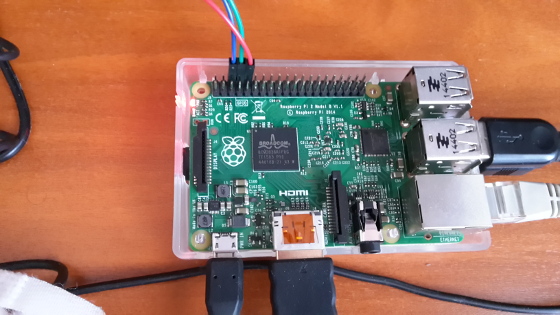Draft version of documentation under development may change!
Click here for the latest released version.
Commercial Licensed Packages
Append to following lines to conf/local.conf to include libomxil under a commercial license to your build:
# For libomxil
LICENSE_FLAGS_WHITELIST = "commercial"
IMAGE_INSTALL_append = " libomxil"
Raspberry Pi Touchscreen with Rotation
If you have Raspberry Pi official 7” touchscreen connected, you can rotate it with these lines in /etc/xdg/weston/weston.ini
root@raspberrypi3:/etc/xdg/weston# cat weston.ini
[core]
backend=drm-backend.so
shell=desktop-shell.so
[shell]
locking=true
# Uncomment below to hide panel
#panel-location=none
[launcher]
icon=/usr/share/weston/terminal.png
path=/usr/bin/weston-terminal
[launcher]
icon=/usr/share/weston/icon_flower.png
path=/usr/bin/weston-flower
[output]
name=DSI-1
transform=270
Debugging
It is possible to debug AGL images on Raspberry Pi using 3.3V USB to serial cable, such as Olimex USB-Serial-Cable-F, connected to the UART of the board. Follow the instructions below to connect a cable to the board (do it on your own risk, no warranty is provided):
- Connect the BLUE wire if you are using Olimex USB-Serial-Cable-F to pin 6 of Raspberry Pi,
- Connect the RX line of the cable (GREEN wire if you are using Olimex USB-Serial-Cable-F) to pin 8 (TX line) of Raspberry Pi,
- Connect the TX line of the cable (RED wire if you are using Olimex USB-Serial-Cable-F) to pin 10 (RX line) of Raspberry Pi.

- Plug the USB connector of the cable to your computer and use your favorite tool for serial communication, for example on Ubuntu and other Linux distributions you may use screen:
sudo screen /dev/ttyUSB0 115200
Pay attention that the colors of the cable may vary depending on the vendor. If you have USB console cable from Adafruit please have a look here.